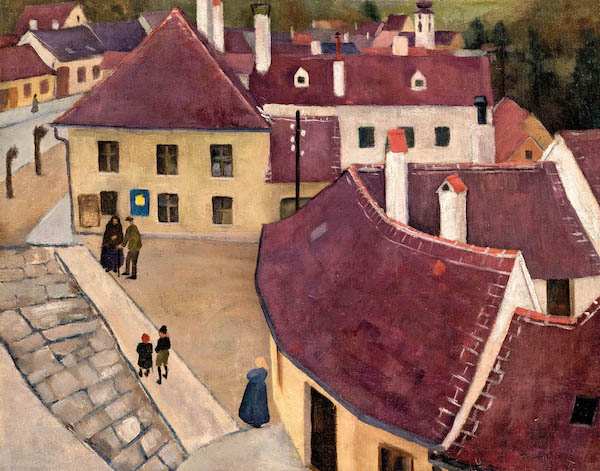Biography
Hungarian painter Kató Petrich was born on October 20, 1908 in Budapest, into a middle class family. She studied at the School of Industrial Drawing from 1924 to 1928, and then at the College of Fine Arts from 1928 to 1934, where she obtained a diploma as a painter and drawing teacher. Her teachers at the college were: Oszkár Glatz, Károly Baranski, Alajos Kisfaludi Strobl, Károly Lyka and Nándor Varga. She considered herself primarily Glatz's student. Later, she also attended a teacher training institute to become an art teacher with Oszkár Glatz and István Szőnyi (1937-38).
During her college years, she developed her skills in artist colonies. He participated in summer artist colonies and subsequent exhibitions in Sopron (1929), Mohács (1931 and 1932) and Pécs (or Kökény) (1934). Later, in the summer, he made independent study trips to ethnographically interesting regions, where he painted numerous pictures: Rimóc (1935), Tard (1937), Kiskunhalas and Decs (1939), and in 1940 he officially participated in the group research work of the National Institute of Landscape and Ethnography in Árpíli, the imprint of which can be found in the archives of the Museum of Ethnography.
In the 1930s and 1940s, he studied, depicted and documented peasant culture as a painter and village researcher. His paintings bear the marks of an innate talent. Later, she illustrated textbooks, took on advertising design, silk painting, and when she managed to get a teaching job, she taught, most recently at the same civil school where she herself studied with her friend Amy Károlyi.
During her life, she worked as an art teacher in several cities: Kőszeg: 1934-35, Budapest: 1938-40, Kecskemét: 1940-41, Újvidék: 1941-44, where she was a member of the Délvidéki Szépmíves Céh and her works were included in several exhibitions, Győr: 1945-46. She joined the National Association of Hungarian Artists in 1943. In 1944, she married Jenő Petneki, who was then a teacher at the Újvidék Conservatory.
After the war, it was very difficult for her to find a job as an art teacher. Between 1951 and 1957, he was unemployed and raised his two minor children at home. During this time, he also worked as a textbook illustration and silk painting to improve the family's financial situation. Between 1957 and 1967, he taught as an art teacher in primary schools in Budapest for ten years.
Since he did not join the Fine Arts Fund after 1956, he no longer had the opportunity to exhibit his paintings. During this period, he painted pictures for his own pleasure. He also painted in Sopron during a vacation in 1977. Twenty years after his retirement, on his way home from a nice concert, he died in Budapest, near his apartment, on April 10, 1987.
Before the war, some of his paintings were included in several exhibitions, some of which are no longer available. His paintings are mostly in private ownership, one work is kept by the Hungarian National Gallery.


